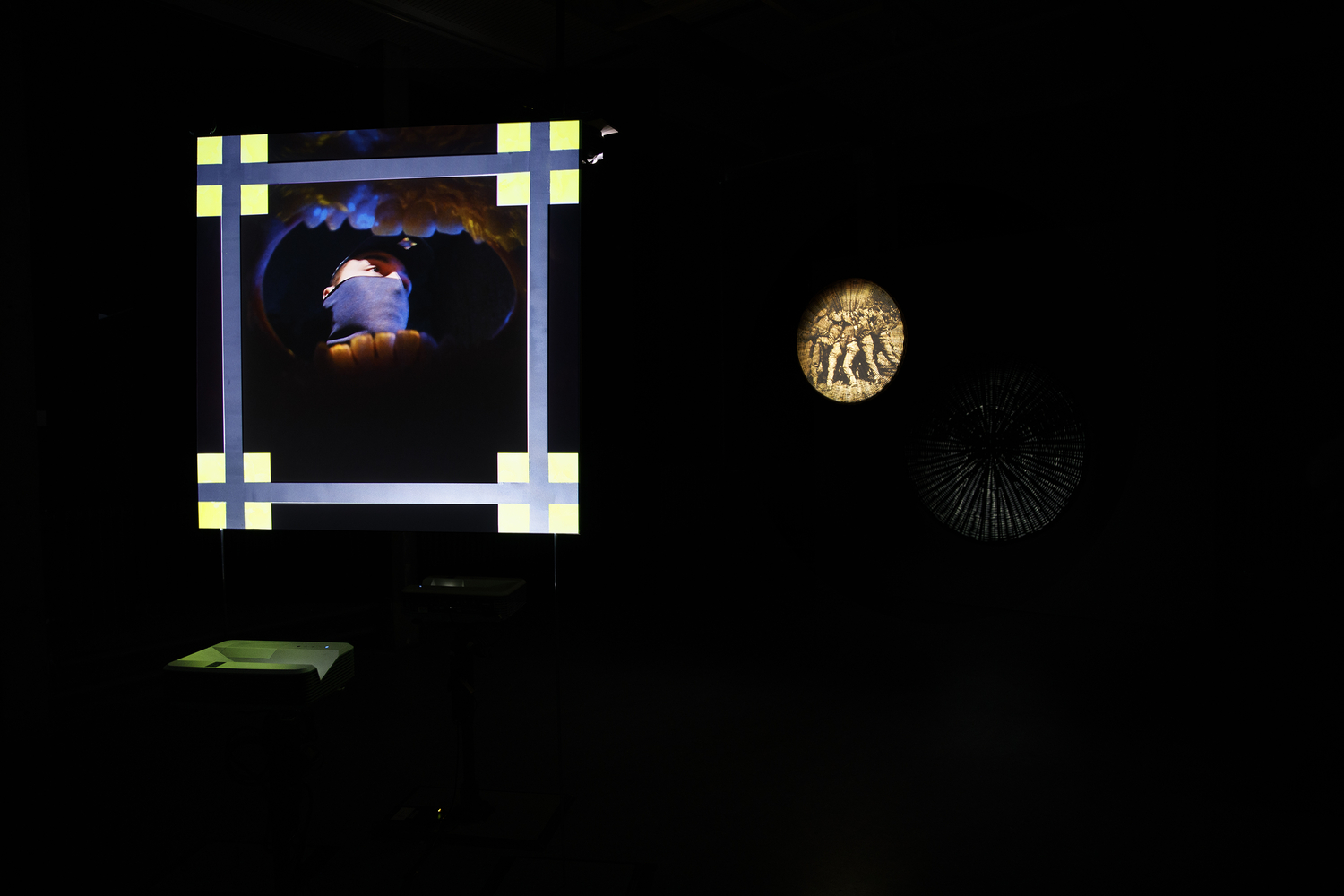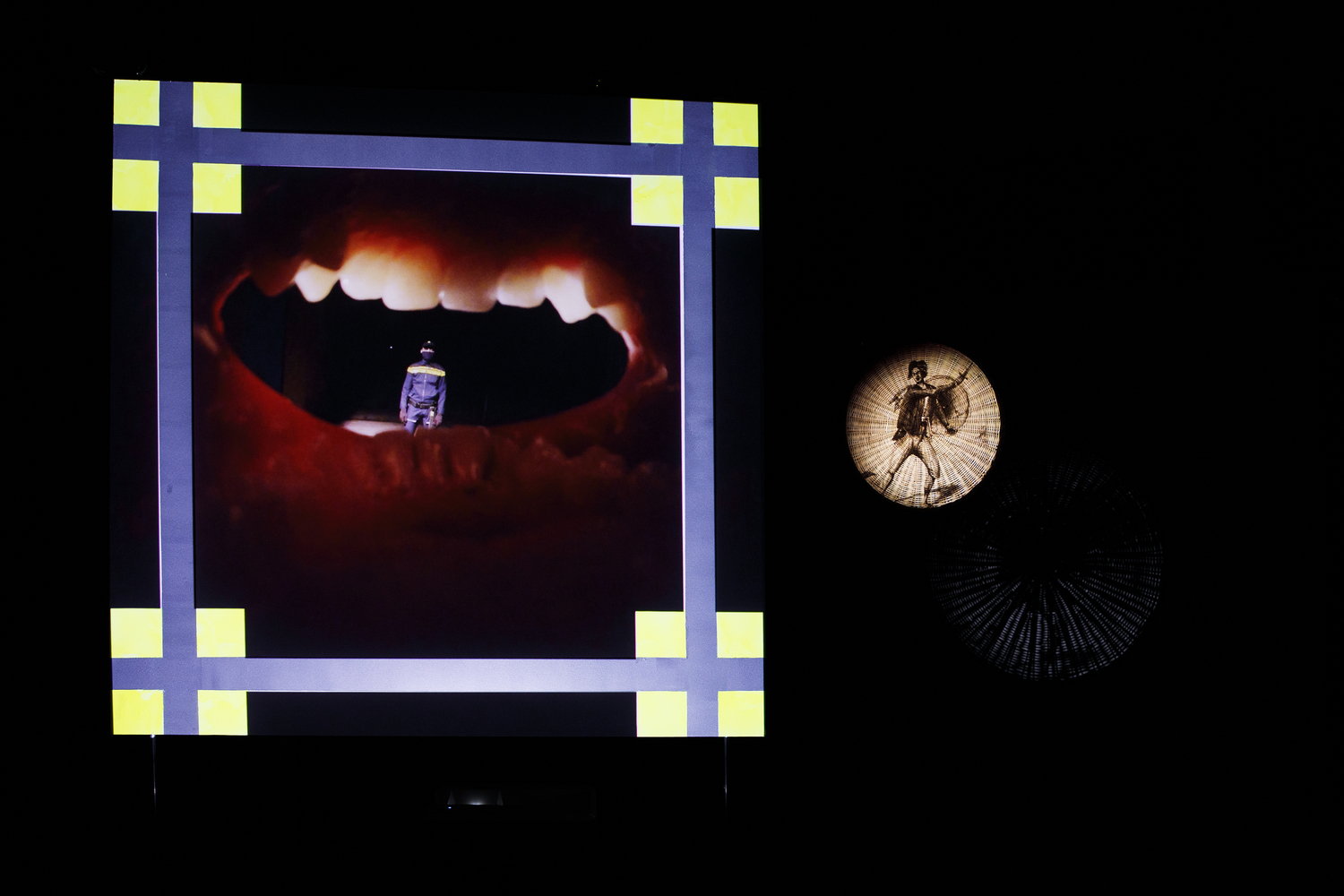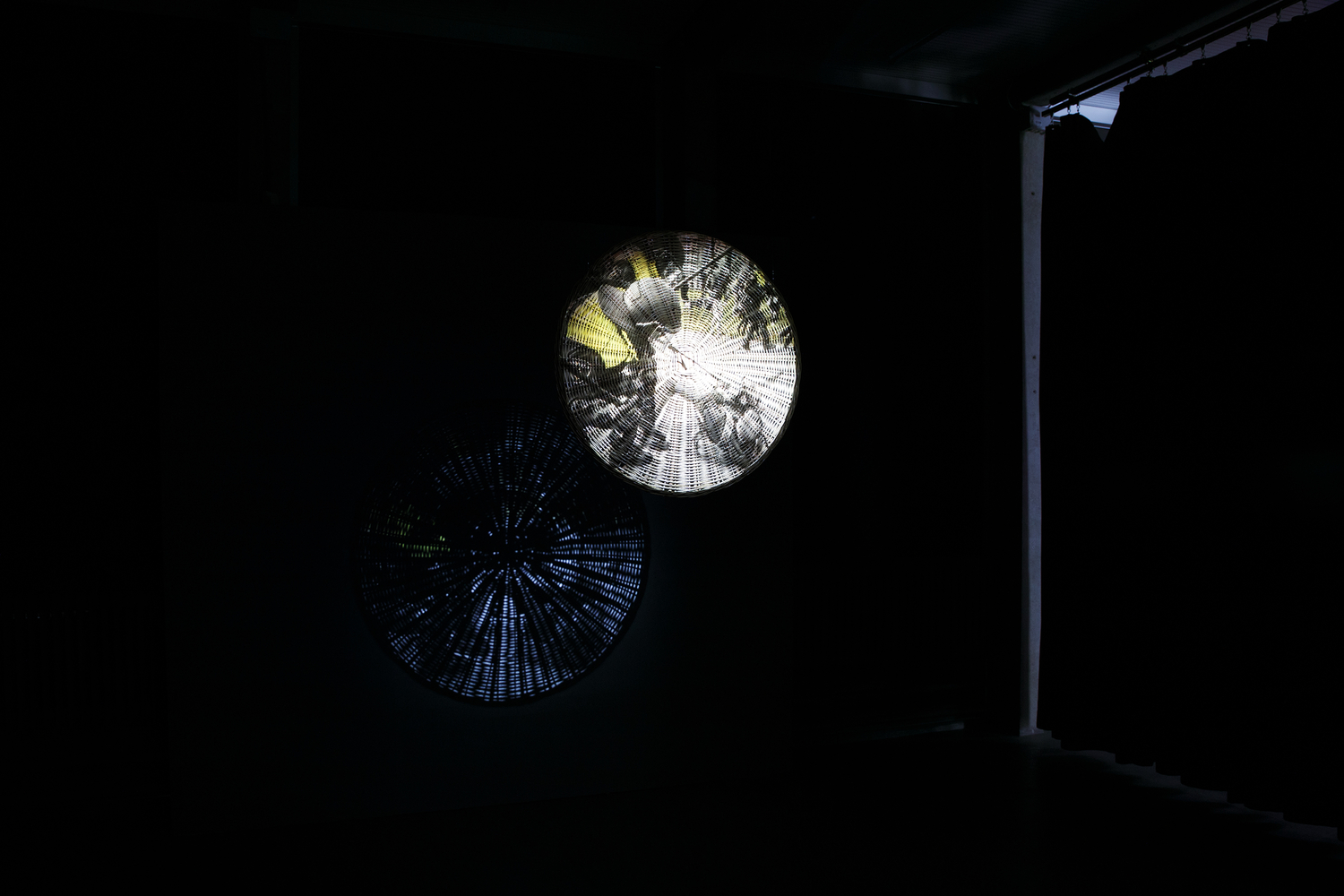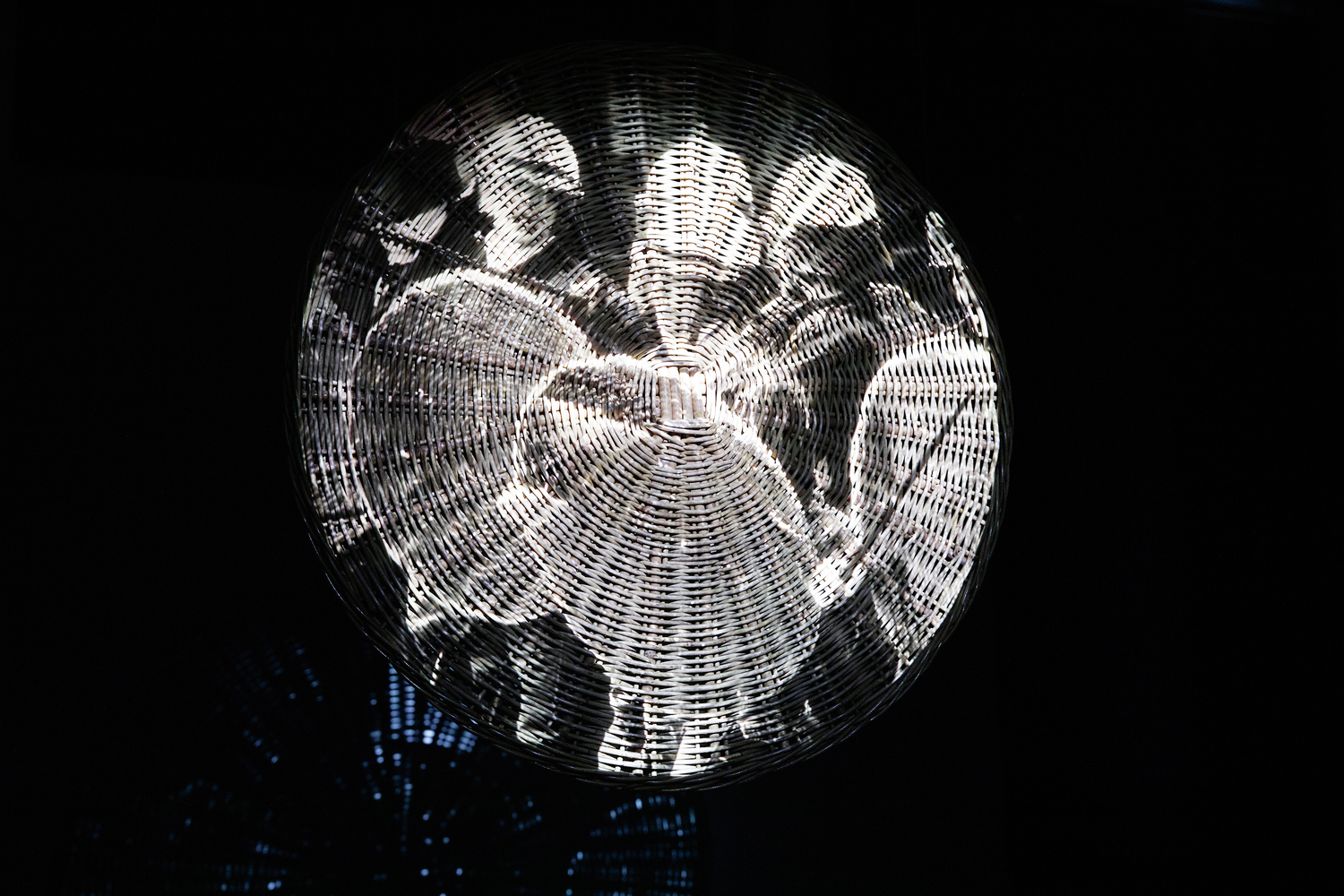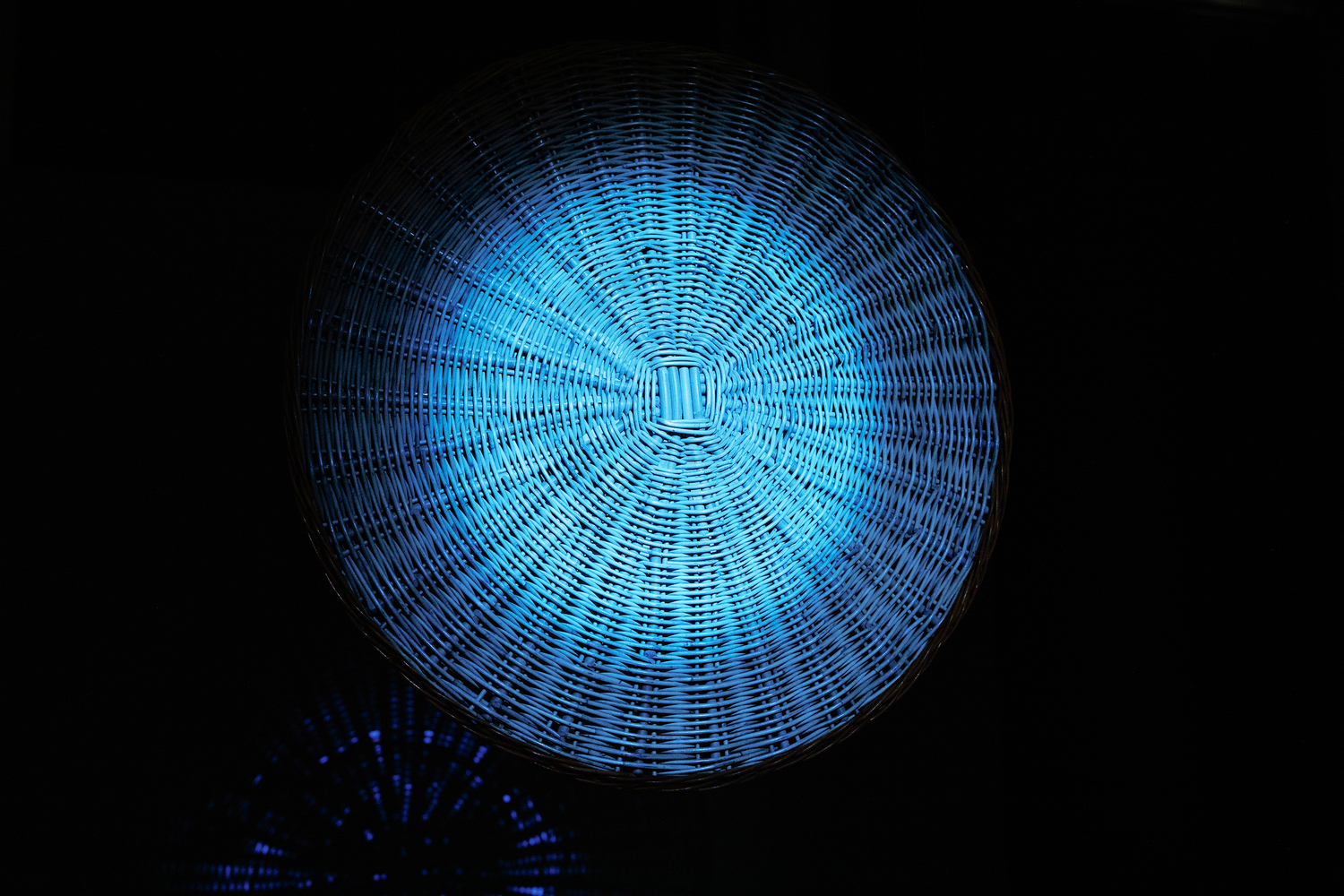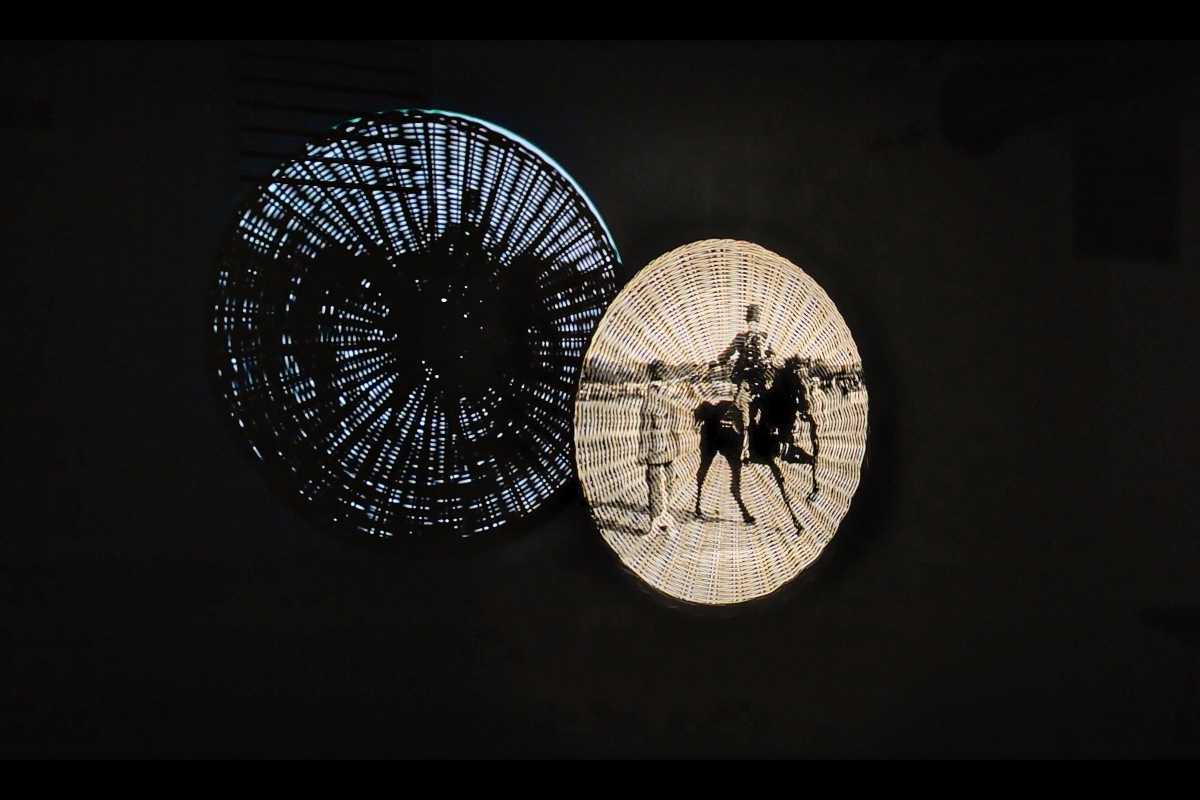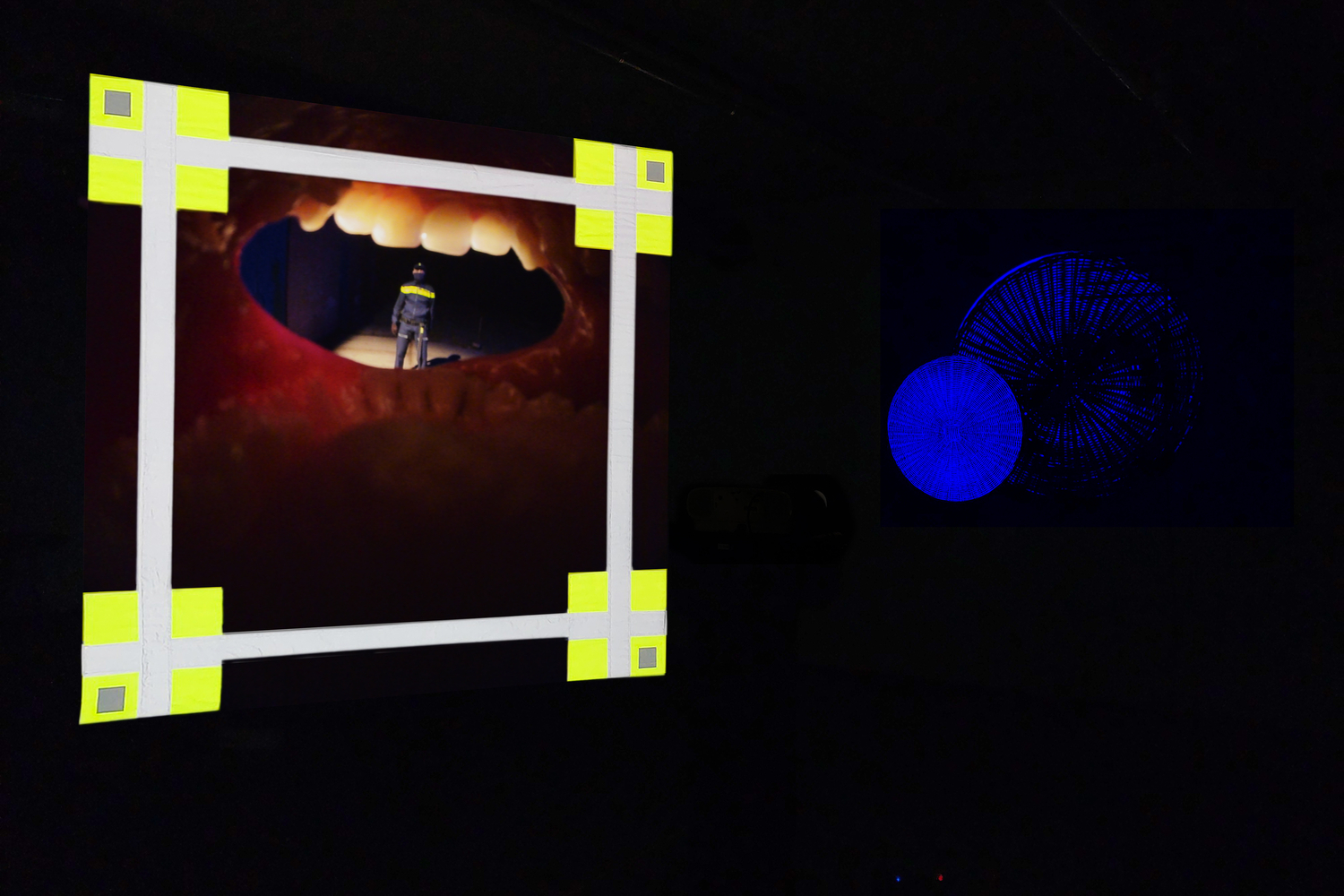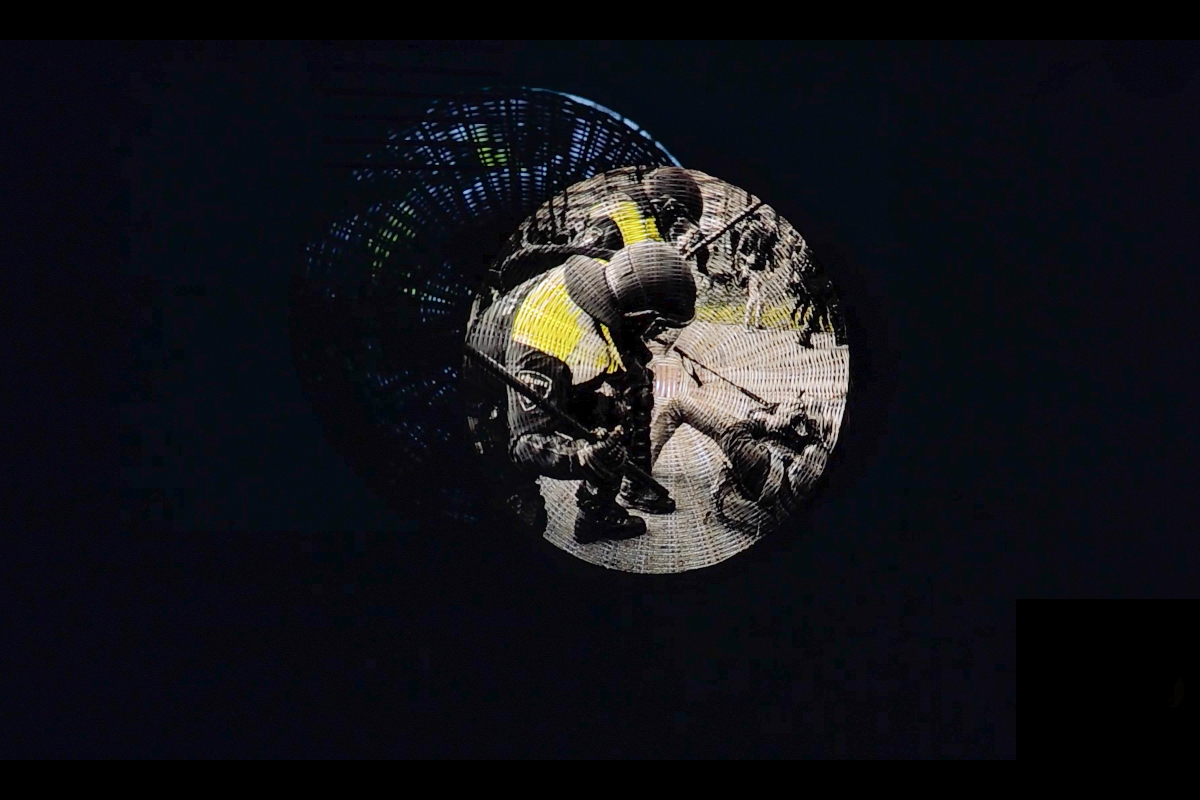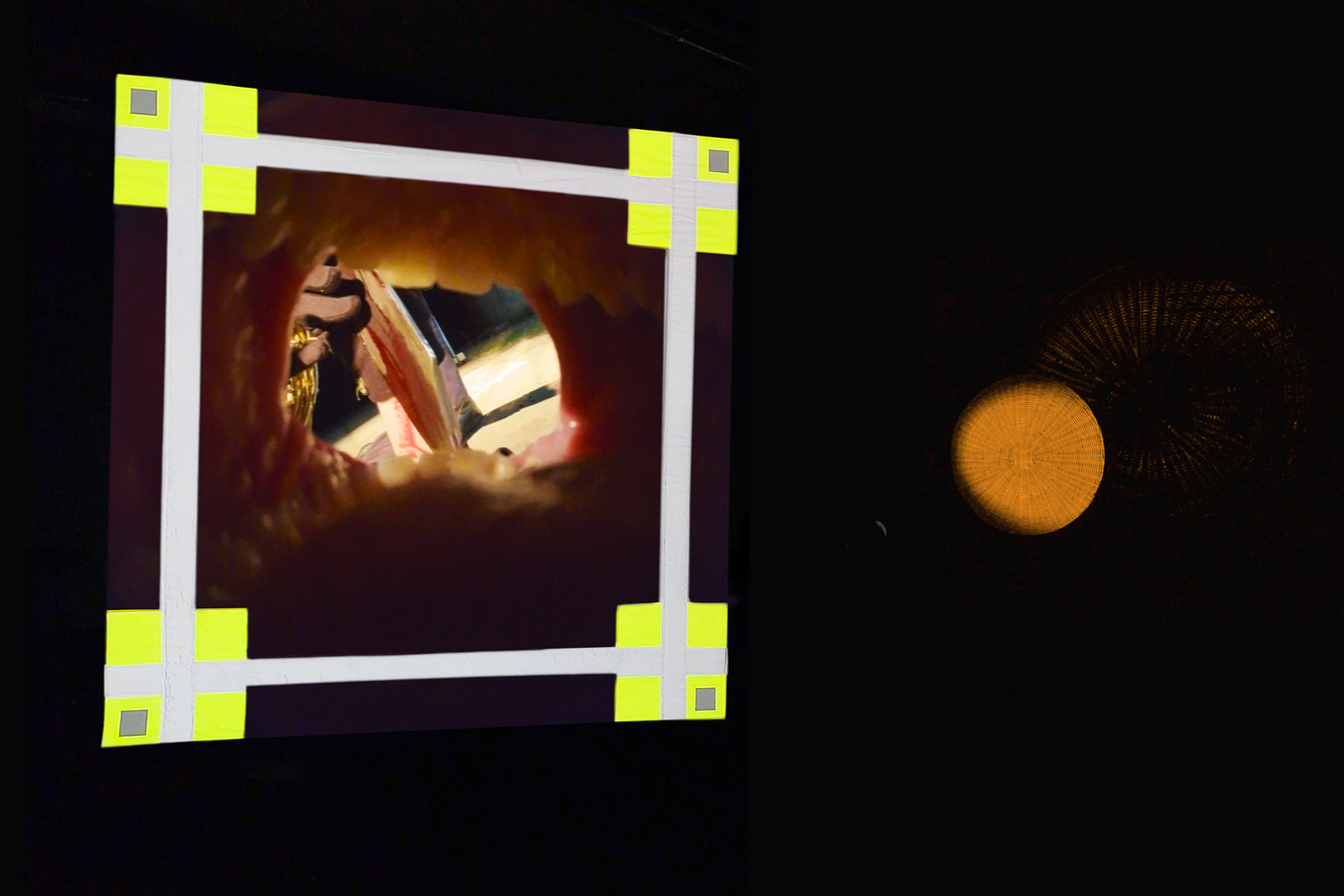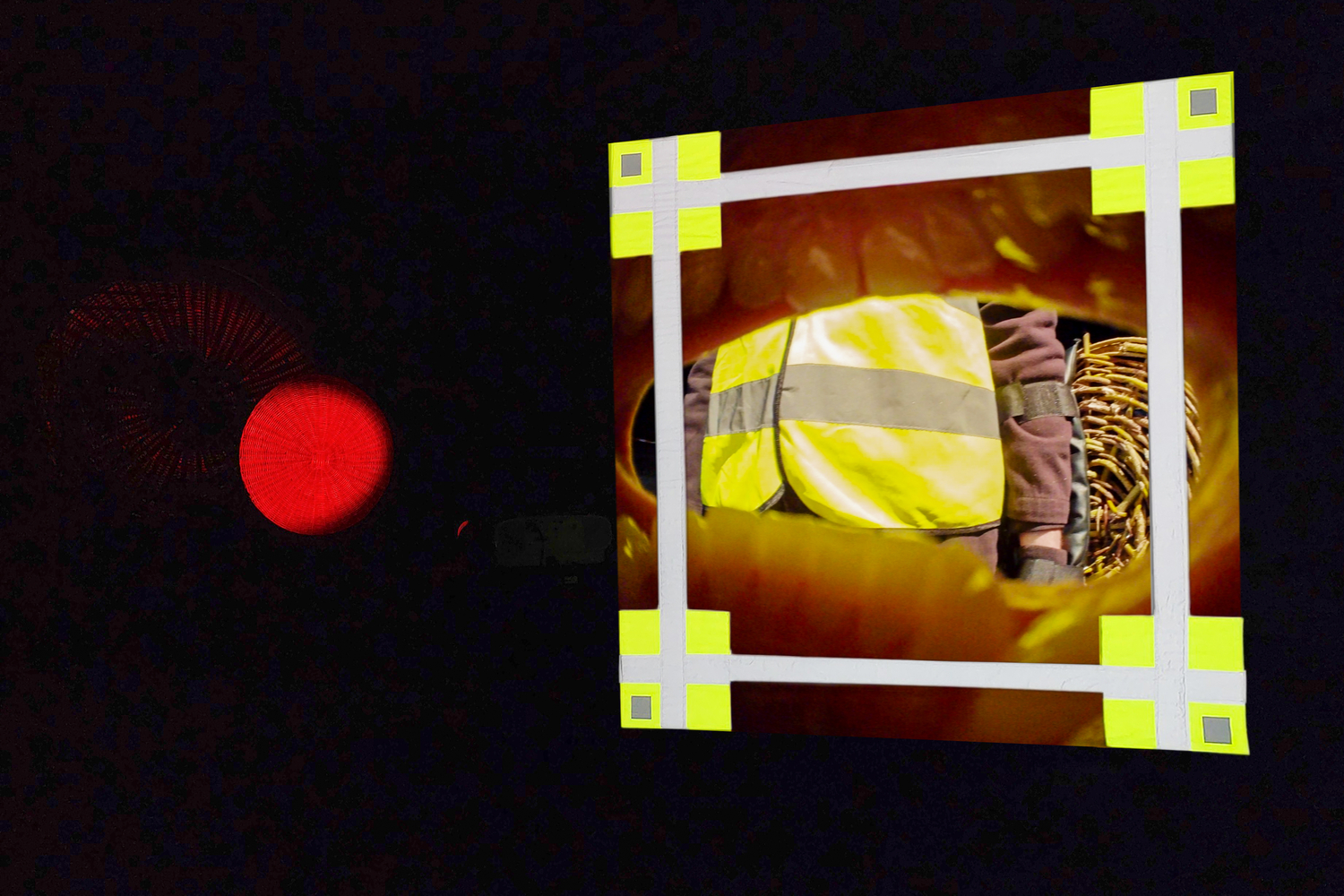
Lucas Huikeshoven
he/him
Netherlands, 1997
lucashuikeshoven.nl / @lucashuikeshoven
Thesis: Baroque Cinema, A Quest For Activist Propaganda
Met Blanje Bewapend
Rising up, protesting and resisting always define a zone of confrontation with the powers that oppress, control and claim monopoly on both order and violence in order to maintain it. This zone of encounter, often between protesters and police forces, is a space of dramatic gestures—hands rise, mouths scream in protest, objects are thrown or used as shields. A demand when not heard or discussed becomes a scream, and a scream cannot be contained in a frame. It comes from the depth of an emotion. We witness an entanglement between protesters and police force from the strange perspective of a mouth. It amplifies the cry of a violent encounter and establishes an embodied point of view. We become a scream projected onto a double screen, framed by the fluorescent yellow of police uniforms. A rattan shield, with its origin in the Dutch colonial past, and still used by the police, becomes a screen for pulsing archive footage portraying scenes of protest, in red to orange, white, and blue light. Dramatic perspectives are designed to persuade and trigger emotions. We are invited to experience and question the conditions of protest, of what it means to act and to resist in the Netherlands.
Alena Alexandrova, June 2023
Met Blanje Bewapend (Armed With White) is a critical installation that reflects on the monopoly of violence of the dutch police-force, and its escalating threat to people’s lives and their right to protest.
By showing a current day officer with a Bornean inspired ‘Mandau sword’ in the style of their present visual language, the work recontextualizes the past of the police force, and the absurdity of their current use of Indonesian rattan shields. The protester in the scene uses a wicker shield in defense as well, but in this case the shield is made from local willow-trees.
Since 2019, the Dutch police have been increasingly violent and have been investing in more heavy weaponry that threatens people’s lives. This has an escalating effect that resulted in an increase of violence by people to the police in 2019, 20 and 21. However, whereas violence to the police decreased with 12 percent in 2022, violence by the police keeps increasing.
The work juxtaposes archival images from the 1820s with present ones, pointing out the similarities between native Indonesian warriors, Dutch colonial military “politionele acties”, the Dutch “Marechaussée” (military/border police) and the police. By looking back at the historical context from which this monopoly of violence arose, the work draws a line from the Dutch colonial military weapons and war techniques, to the Marechaussée, to the eventual adaptations in the formation of the militarization of the Dutch police force from 1919 to the present day.
The title of the work refers to ‘white weapons’ (swords, such as the Klewang) that the Dutch police used in confrontations until 1957. Therein, the word ‘white’ is replaced by the old Dutch synonym ‘blanje’, taken from the description of the Prince’s Flag: ‘Oranje, Blanje, Bleu’ (Orange, White, Blue), the colonialera predecessor of the current Dutch flag. For instance, it was used in the colonial flag of ‘Dutch East India Company,’ ‘VOC’.
Lucas Huikeshoven - June 2023
